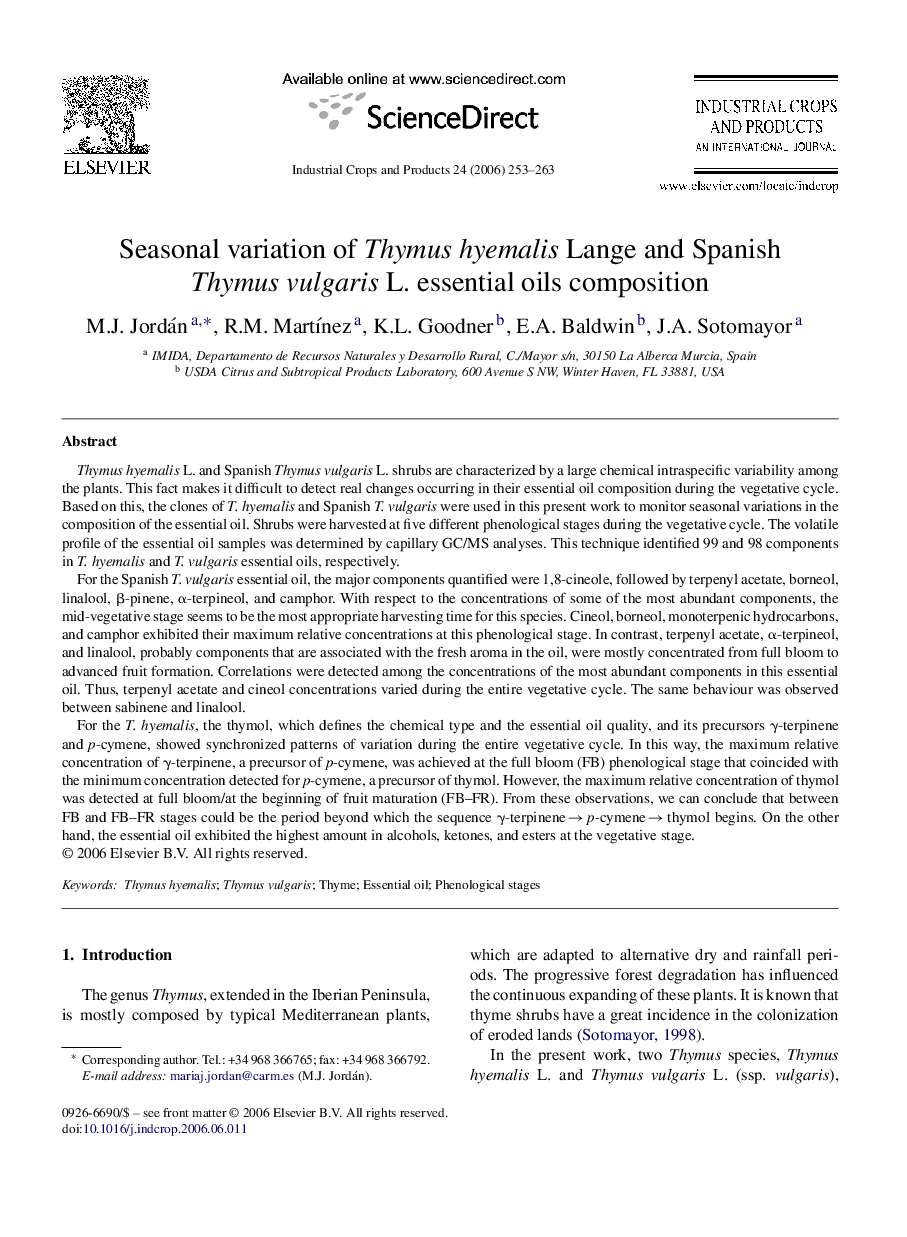| Article ID | Journal | Published Year | Pages | File Type |
|---|---|---|---|---|
| 4515268 | Industrial Crops and Products | 2006 | 11 Pages |
Thymus hyemalis L. and Spanish Thymus vulgaris L. shrubs are characterized by a large chemical intraspecific variability among the plants. This fact makes it difficult to detect real changes occurring in their essential oil composition during the vegetative cycle. Based on this, the clones of T. hyemalis and Spanish T. vulgaris were used in this present work to monitor seasonal variations in the composition of the essential oil. Shrubs were harvested at five different phenological stages during the vegetative cycle. The volatile profile of the essential oil samples was determined by capillary GC/MS analyses. This technique identified 99 and 98 components in T. hyemalis and T. vulgaris essential oils, respectively.For the Spanish T. vulgaris essential oil, the major components quantified were 1,8-cineole, followed by terpenyl acetate, borneol, linalool, β-pinene, α-terpineol, and camphor. With respect to the concentrations of some of the most abundant components, the mid-vegetative stage seems to be the most appropriate harvesting time for this species. Cineol, borneol, monoterpenic hydrocarbons, and camphor exhibited their maximum relative concentrations at this phenological stage. In contrast, terpenyl acetate, α-terpineol, and linalool, probably components that are associated with the fresh aroma in the oil, were mostly concentrated from full bloom to advanced fruit formation. Correlations were detected among the concentrations of the most abundant components in this essential oil. Thus, terpenyl acetate and cineol concentrations varied during the entire vegetative cycle. The same behaviour was observed between sabinene and linalool.For the T. hyemalis, the thymol, which defines the chemical type and the essential oil quality, and its precursors γ-terpinene and p-cymene, showed synchronized patterns of variation during the entire vegetative cycle. In this way, the maximum relative concentration of γ-terpinene, a precursor of p-cymene, was achieved at the full bloom (FB) phenological stage that coincided with the minimum concentration detected for p-cymene, a precursor of thymol. However, the maximum relative concentration of thymol was detected at full bloom/at the beginning of fruit maturation (FB–FR). From these observations, we can conclude that between FB and FB–FR stages could be the period beyond which the sequence γ-terpinene → p-cymene → thymol begins. On the other hand, the essential oil exhibited the highest amount in alcohols, ketones, and esters at the vegetative stage.
